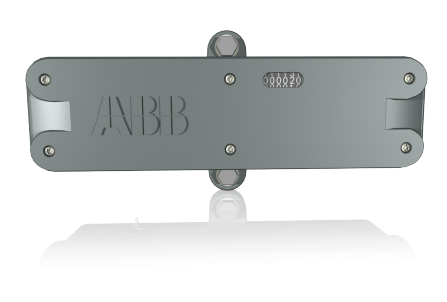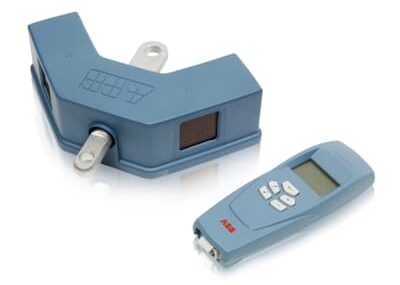Thorne & Derrick - Surge Counters | Monitoring The Health Of Surge Arresters
Posted on 26 September 2022

Surge Counters are used to monitor the health of Surge Arresters and protect against potentially damaging events which could lead to deterioration and ultimate overload. It is important to also schedule regular checks of surge arresters including visual inspection and diagnostics to detect and prevent a costly medium voltage power outage.
Well-designed and tested, ABB surge arresters are maintenance-free and can reasonably be expected to have a long service life. However, the condition of these surge arresters should also be monitored to ensure the most ultimate protection against a costly unplanned power outage. This can be achieved using the ABB EXCOUNT range of surge counters and monitors.
Surge Counters
Surge registration
The primary reason for the use of surge counters on modern gapless ZnO arresters is to check if a particular transmission line or phase suffers from an exceptionally high number of overvoltages leading to arrester operation — lightning faults on a line, for example. If this is the case, whilst it validates the need for the arresters, use of some preventative counter measures may be warranted to limit the number of surges. A sudden increase in the counting rate may also indicate an internal arrester fault, in which case the arrester should be investigated further.
However, simple surge counters tell only part of the story, as they only register the number of surges according to their operating characteristic. The user therefore has no way of telling the magnitude of the surge and if it was significant, nor when it occurred and if it was coincident with a system event.

Leakage current measurement
Surge counters can be complimented with the substation facility to measure leakage currents (total and/ or resistive), with the intention of monitoring and diagnosing the condition of the arrester and its state of fitness for continued service. However it is important to understand the validity of the information provided.
At continuous operating voltage (Uc), a metaloxide varistor acts as a capacitor, leading to a predominantly capacitive component of current and a significantly smaller resistive part. For a complete surge arrester, the capacitive current is further dependent on stray capacitances, pollution currents on the insulator surface, number of varistor columns in parallel and the actual operating voltage. Meanwhile the small resistive component of the leakage current is temperature and voltage dependant.
Since the capacitive component of the current dominates so greatly, the total leakage current measured on a basic mA-meter will be very sensitive to the installation; making interpretation of the readings difficult. Furthermore, the capacitive current does not change significantly due to deterioration of the voltage-current characteristic of the surge arrester. Consequently, measurement of capacitive current cannot reliably indicate the condition of metal-oxide arresters. Nevertheless, increasing values may be of some use in indicating that cleaning of the insulators is necessary.
Instead, it is generally recognized (IEC 60099-5) that the only reliable indicator for the condition of a gapless arrester that can be assessed during normal service is to measure the resistive component of the leakage current (or estimate it from the 3rd harmonic).
The obtained value may then be compared with the maximum allowable resistive current as given by the manufacturer under prevailing service conditions i.e. temperature and applied voltage.
If a metal-oxide varistor ages or is damaged by impulses etc, the arrester resistive leakage current, and hence power losses, increase permanently. This may result in an increase in temperature, which in turn, increases the leakage current and so on until a so-called thermal runway occurs. Early detection of a possible harmful increase may prevent a failure and subsequent unplanned shutdown. Hence, to provide true diagnostics, a good monitor must be able to detect the arrester leakage current and isolate and measure the resistive component flowing internally.

EXCOUNT Surge Counters | ABB
Diagnostic plan
A surge arrester does not contain any moving parts or items that can break.
Consequently there is nothing to maintain, adjust, correct or repair, which is why there is normally no need to perform any form of periodical checking or monitoring. In general, a correctly chosen and installed arrester is maintenance free during its entire lifetime. A correctly chosen arrester in this context means that its electrical and mechanical characteristics are matched to actual service conditions.
Nonetheless, since external factors can place stresses on the arrester, potentially leading to its deterioration and ultimate overload, it may be prudent to draw up a schedule for regular checks. Such consideration is all the more important if an unplanned outage is unacceptable for reasons of system stability or economics. The older the arrester, the more regular these checks may need to be, since the statistical risk for overload increases with age.
As a guide, the following strategy is proposed to be made at regular intervals as required and determined by site availability and importance:
- Visual inspection and possible cleaning
- Diagnostics in advance of the designated lighting season and thereafter following periods with bad weather conditions.
- Diagnostics after special fault conditions causing flashover in the network or TOV’s of high amplitude and/ or long duration.
Because of their nature, old-style gapped arresters should be removed as soon as possible as part of a scheduled replacement program. Their age and inherent design does not warrant detailed evaluation. Early models of gapless arresters may require additional visual checks to look for signs of mechanical or physical deterioration as well as monitoring of the internals. Newly purchased arresters can also benefit from diagnostic monitoring right from first installation since this permits easy trend analysis to detect potential deterioration later on in its service life.
EXCOUNT-C |
EXCOUNT-I |
EXCOUNT-II |
EXCOUNT-III |
 |
 |
 |
 |
Safety Comes First
Monitoring Surge Arresters
EXCOUNT draws upon over 80 years of experience by ABB in the development of arresters and associated accessories. Safety, functionality and longevity are key elements which are given priority in selection and design of components. The EXCOUNT range has not neglected short-circuit safety which lies inherent in the design concept.
The EXCOUNT family is characterized by:
Highest Personnel Safety
- Same electrical safety performance as ABB arresters
Negligible Residual Voltage
- Does not reduce protection margins
- Minimized risk for injury in case of accidental contact during surges
Maintenance Free
- Sealed components
- Requires no external power supply (except for EXCOUNT-III)
Long Life
- Moulded components, non-sensitive to humidity or temperature variations
Universal Application
- All makes and types of gapless surge arresters.
- All weather and temperature conditions.
Design
The use of an impulse current transformer with a single-turn primary ensures that the voltage drop across the counter is negligible, even at the highest impulse currents encountered in service. This leads to added personnel safety and no increase in the protection level of the arrester. Since no gaps or series impedance are used, there is no risk of internal arcing and consequent explosive failure in the event of a short-circuit following an arrester failure.
One further common feature with the entire EXCOUNT family is that all internal components are fully encapsulated in polymer. This provides sealing to IP67, which ensures no harmful ingress of dust or moisture as well as providing personal safety through complete protection against contact with the internals.
EXCOUNT is available in different variants, depending on the user’s needs: simple, basic or extensive. Contact Thorne & Derrick for more information.





